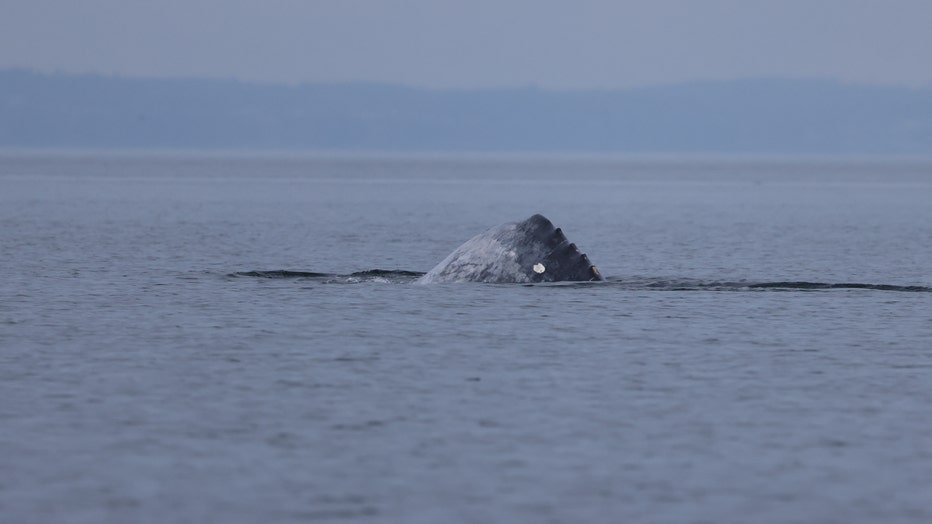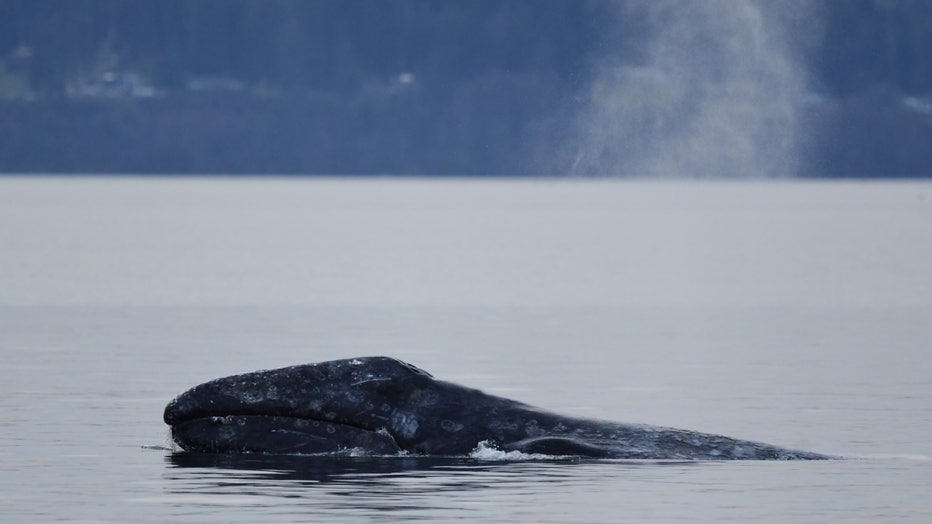Gray whales return to Salish Sea as population struggles
Experts concerned over rise in gray whale strandings
A dead whale was found washed ashore along Washington's outer coast on Tuesday, the fifth gray whale stranding along Washington's coast this month alone. Wildlife officials have been investigating an unusual rise in the number of gray whale strandings since 2019.
WASHINGTON - The Orca Network and the Cascadia Research Collective have confirmed the return of four gray whales, or "Sounders" to Salish Sea waters.
Each year in the late winter, a small group of gray whales will detour from their usual 5,000-mile migration between the southern tip of California and the Bering Sea near Alaska to make a stop in the Salish Sea.
With tidal flats around Whidbey Island, Camano Island and other areas, the Sounders make the stop to feast on ghost shrimp, which is their preferred food. The waters are densely populated with ghost shrimp, according to the Orca Network.

North Puget Sound "Sounders" gray whale CRC53 Little Patch, showing the patch on his flank that gives him his name, by Alex Zerbini, Cascadia Research Collective
At least one gray whale was documented feeding around the Snohomish River delta as early as Friday, Jan. 12, according to the Orca Network. Four other whales have arrived in the area since then.
Vessel operators of all types are reminded to be on the lookout for any type of whale and to share the water. Gray whales can surface anywhere unexpectedly. At first sight of any whale, all vessels should slow to under 7 knots and keep at least 100 yards from gray whales, laws in Washington say.

Whale sightings from the public provide critical information to scientists, researchers and ferry operators. Whale sightings of any species can be sent to sightings@orcanetwork.org, or via their website.
"The additional months the grays spend feeding in North Puget Sound delight all of us who watch these lovely whales so close to our shores," said Susan Berta, Executive Director of Orca Network, "but it can also increase the possibility for negative human interactions. Staying later in these busy waterways makes them more vulnerable to ship strikes, or entanglement in fishing gear."
However, some researchers are worried that their early arrival might have some negative impacts on the whales' population.
A total of 692 gray whales became stranded along their migration route from Mexico to Alaska, causing the National Oceanic Atmospheric Administration (NOAA) to designate it as an Unusual Mortality Event in 2019.

North Puget Sound "Sounders" gray whale CRC53 Little Patch shows his face, by Serena Tierra, Orca Network
Those numbers "possibly represent only 10% of the actual mortality, and as of June 2023, the population has declined a staggering 46%. Coinciding with the UME, for the past four years several of the "Sounders" have been arriving earlier and staying longer than in previous years to take advantage of the abundant food they find along some Puget Sound shorelines... One whale was first seen in January 2022 and is the first Sounder on record to spend a continuous year feeding in areas throughout the Whidbey Basin rather than join the migration," the Orca Network.
"This area has become an increasingly important feeding area for gray whales, especially in these years where the overall population has faced increasing challenges getting enough to eat," said John Calambokidis, a founder and research biologist at Cascadia Research who has studied these whales for most of his career going back to 1990. "We are excited to be expanding our research this season with the help of a grant from the National Estuary Program that will allow us to better examine their health and factors impacting them."

